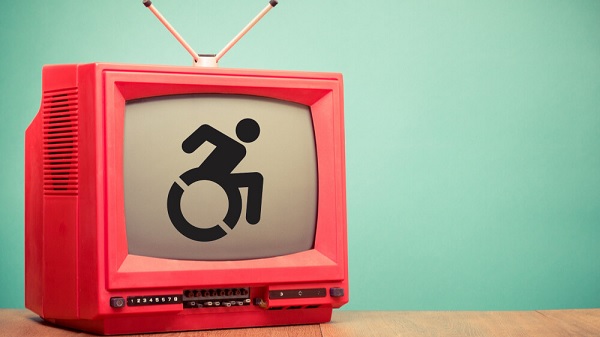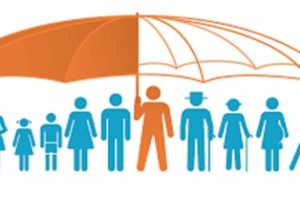
The role of media in shaping societal perceptions and attitudes is profound, particularly when it comes to representing marginalized groups, such as individuals with disabilities. Media serves as a powerful platform for influencing public opinion, providing a narrative that can either reinforce stereotypes or promote understanding and inclusivity. By giving visibility to the experiences of people with disabilities, media can challenge misconceptions and advocate for social justice, addressing the systemic barriers that hinder full participation in society. It is crucial for the media to recognize its responsibility in fostering empathy, awareness, and positive change.
With the growing recognition of the diverse experiences of individuals with disabilities, media outlets have a unique opportunity to serve as allies and advocates. Through thoughtful and accurate representations, media can highlight the strengths, capabilities, and contributions of individuals with disabilities, rather than focusing solely on the challenges they face. This shift in narrative is essential not just for entertainment and news purposes but also for educating the public and dispelling myths that contribute to discrimination and albinism. In doing so, media can play a critical role in normalizing conversations around disability and enhancing societal understanding.
Furthermore, inclusive media representation can empower individuals with disabilities by giving them a voice and a platform to share their stories. When people see themselves reflected in diverse media—from television shows and films to social media platforms—they experience validation and recognition of their lived experiences. This representation can bolster self-esteem and encourage individuals with disabilities to advocate for their rights and interests, fostering a sense of community and belonging. The media’s commitment to inclusive storytelling can ultimately lead to a more equitable society where individuals with disabilities are viewed as integral members of the community.
Ultimately, the media has the potential to be a transformative force in promoting the interests and rights of individuals with disabilities. By prioritizing authentic representation and advocating for accessibility, media can bridge the gap between diverse communities, fostering understanding and compassion. As the dialogue surrounding disability continues to evolve, it is essential for media professionals to recognize their power and responsibility in shaping a more inclusive narrative that uplifts and celebrates the rich tapestry of humanity.
A frequent concern arising in discussions across various forums and media platforms is the inadequate coverage of individuals with disabilities. In a nation with a significant population of people living with disabilities, it is troubling to note that media programs dedicated to this community are grossly insufficient.
Coverage for people with disabilities should not merely entail the creation of programs labeled “People with disabilities.” Instead, it is crucial to promote the integration of inclusive content across all media formats—be it recreational, economic, or political. This integration means analyzing issues through the lens of people with disabilities. For example, when discussing economic matters, it is essential to include analyses that take into account the specific challenges and perspectives of disabled individuals.
Merely organizing a program exclusively for people with disabilities on a weekly or fortnightly basis does not equate to meaningful coverage. Such limited representation fails to foster true equality with other societal groups. Disability should be recognized as an essential aspect of society and should be addressed in the same context as other demographics, such as youth, women, teachers, or engineers.
Moreover, it’s important to consider how disability is portrayed in media. Overemphasizing or misrepresenting disability creates discomfort not only for individuals living with disabilities but also for audiences at large. For instance, a person with a leg injury may find climbing stairs challenging; therefore, rather than expressing sadness or pity, we should focus on making environments more accessible. Such efforts illustrate a commitment to inclusivity, and it is crucial to approach the topic with a sense of practicality and determination.
Another critical issue in media representation is the language used to describe disabilities. The nuanced use of language often stems from well-intentioned but misguided attempts to avoid offense. For example, the term “blind” has evolved over time; while it accurately describes a condition, it may not encapsulate the profound experiences of those living with visual impairments. Some argue that the term carries connotations that disregard the capabilities and inner visions of blind individuals, promoting instead a more respectful language that recognizes their experience.
To enhance the integration of people with disabilities into media coverage, there is a pressing need to consult with individuals from this community and relevant advocacy organizations. Their insights will help shape a more inclusive approach to language and representation. Coverage for people with disabilities should not be relegated to special segments; instead, it should be woven into the fabric of all content, ensuring that these vital perspectives are part of our broader societal discussions.
Furthermore, it is essential for media organizations to invest in training for their staff on disability awareness and inclusive journalism practices. Such training can help journalists understand the societal and economic barriers that people with disabilities face, enabling them to report with empathy, accuracy, and depth. Workshops and seminars led by individuals from the disabled community can be highly beneficial in equipping media professionals with the tools they need to showcase the true diversity and richness of disability experiences.
Equally important is the need for policy change at various levels of media regulation. Advocacy for more inclusive content creation should be paired with a push for regulations that require media outlets to adhere to standards of representation and accountability. Establishing guidelines can ensure that all media professionals recognize their role in shaping public perception and fostering a more inclusive society.
Promoting inclusive content in media is not merely a matter of representation; it is a step toward fostering understanding and compassion among all segments of society. By elevating the voices of people with disabilities through intentional and mindful coverage, we create a richer and more equitable media landscape for everyone. Embracing diversity in media is not an option but a necessity, one that can lead to groundbreaking shifts in societal attitudes and behaviors, ensuring that the lived experiences of every person are accurately depicted and valued.
BY LEULSEGED WORKU
THE ETHIOPIAN HERALD SUNDAY EDITION 20 OCTOBER 2024





